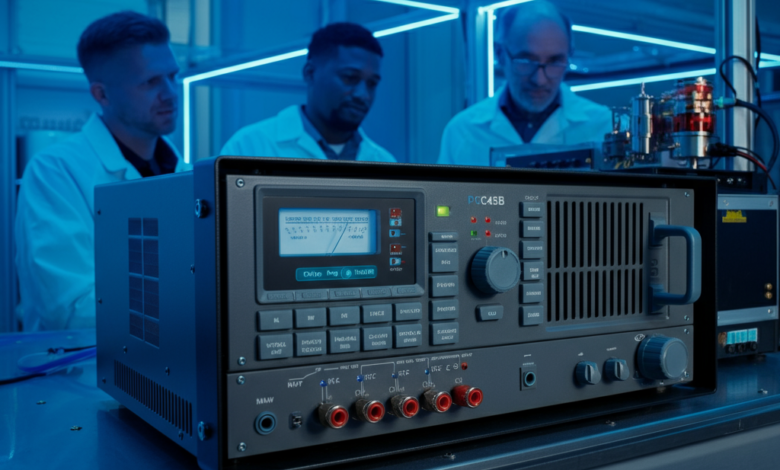Everything You Need to Know About the Todd Engineering PC45B Power Source

When it comes to reliable power sources, the Todd Engineering PC45B stands as a trusted solution for electrical engineers, technicians, and power supply enthusiasts. Designed with cutting-edge technology and a dual voltage interface, it offers versatility and performance to meet professional demands. Whether you’re in the market for a power source that fits a range of applications or you need a dependable device for high-demand scenarios, the PC45B has you covered.
In this blog post, we’ll explore the features and functionality of the Todd Engineering PC45B, explain its dual voltage interface and how it benefits various applications, and provide setup tips, troubleshooting advice, and real-world comparisons. By the end, you’ll understand why the Todd Engineering PC45B is the power source of choice for professionals.
What is the Todd Engineering PC45B Power Source?
The Todd Engineering PC45B is a high-performance power source known for its dual voltage interface, compact design, and exceptional reliability. Whether you’re powering industrial machines, laboratory equipment, or testing setups, the PC45B delivers consistent and adjustable output to meet your needs.
Built with precision engineering, the PC45B combines functionality with durability. Todd Engineering has built a reputation for producing equipment that can withstand rigorous usage while maintaining peak performance, and the PC45B continues this trend.
Key Applications
The Todd Engineering PC45B is ideal for professionals working in:
- Industrial and manufacturing environments
- Electrical testing and research labs
- Prototyping and product development
- Field service and on-the-go power needs
Key Features and Specifications of the PC45B
The PC45B packs a range of features that make it stand out from competing power sources. Here’s a quick overview of what’s under the hood:
Key Features
- Dual Voltage Interface:
-
-
- Operates seamlessly at both 120V and 240V inputs, expanding its usability across different regions and devices.
-
- Compact and Portable Design:
-
-
- Measuring [X dimensions], it’s designed for mobility while still durable enough for industrial environments.
-
- High Efficiency:
-
-
- Energy-efficient operation helps limit power loss during use, saving energy and reducing costs over time.
-
- Advanced Safety Features:
-
-
- Includes overload protection, short-circuit prevention, and automatic shutdown to ensure user safety.
-
- Adjustable Output Settings:
-
-
- Allows for fine-tuning output to match the specific needs of a wide variety of equipment.
-
Specifications
|
Feature |
Specification |
|---|---|
|
Input Voltage |
120V AC / 240V AC |
|
Output Power Range |
[Provide range, e.g., 0-45V] |
|
Efficiency Rating |
[Provide exact efficiency %] |
|
Weight |
[e.g., 10 lbs / 4.5 kg] |
Dual Voltage Interface and Its Benefits
The dual voltage interface is one of the standout features of the Todd Engineering PC45B. Here’s how it works and why it’s important for professionals:
How the Dual Voltage Interface Works
The PC45B is engineered to accept both 120V and 240V input voltages. It automatically adjusts its configuration to accommodate the input, which eliminates the need for external converters or additional settings.
Benefits for Professionals
- Global Compatibility:
Ideal for engineers or technicians working across multiple countries, the PC45B ensures you won’t need different power sources for different geographies.
- Application Flexibility:
Easily switch between industrial-grade equipment (which often requires 240V) and smaller electronics that operate on 120V.
- Energy Efficiency:
Minimizes power loss during conversion, ensuring consistent performance regardless of input voltage.
How to Set Up and Use the PC45B
Setting up the Todd Engineering PC45B is designed to be user-friendly. Follow these steps to get started:
Step 1: Unpacking
- Carefully unbox your PC45B and inspect it for any visible damage during shipping.
- Verify all accessories, including power cables and user manuals, are intact.
Step 2: Select Input Voltage
- Connect the correct power input (120V or 240V) based on your requirements. The dual voltage interface automatically detects and adjusts to the required input.
Step 3: Configuring Output
- Use the intuitive control panel to configure voltage and current levels to match the equipment you’re powering.
Step 4: Testing Equipment
- Test the setup with a voltmeter to ensure safe operation before connecting sensitive machinery.
Step 5: Begin Operation
- Once testing is complete, power your device and monitor performance periodically.
Troubleshooting Common Issues and Maintenance Tips
Even the most reliable power sources can present issues. Here’s how to address some of the most common ones with the PC45B.
Common Issues
- Output Voltage Fluctuations:
-
-
- Check for loose connections or incompatible input voltage.
- Ensure settings are configured correctly.
-
- Overheating:
-
-
- Verify adequate ventilation around the unit.
- Reduce usage during extended high-output scenarios.
-
- Device Not Powering Up:
-
-
- Confirm that the power cable is securely connected and that the power source is functioning.
-
Maintenance Tips
- Regularly clean the unit to prevent dust buildup.
- Perform periodic checks on power cables for wear and tear.
- Schedule an annual professional inspection for calibration and performance checks.
Real-World Applications and Use Cases
The Todd Engineering PC45B is proving its versatility and reliability in real-world scenarios. Check out a few examples of how professionals are using it:
- Industrial Automation:
Power-sensitive automation systems requiring stable voltage supplies.
- Lab Testing:
Support precision testing for experimental setups.
- Field Repairs:
Compact design makes it a favorite for mobile technicians.
How the PC45B Compares to Other Power Sources
What sets the Todd Engineering PC45B apart from the competition? Here’s how it stacks up against similar models:
Competitor 1 Comparison
- PC45B Advantage:
Advanced dual voltage interface for global use, compared to Competitor 1’s single-input system.
Competitor 2 Comparison
- PC45B Advantage:
More compact and portable design, making it easier to carry to job sites.
Competitor 3 Comparison
- PC45B Advantage:
Integrated safety features, providing peace of mind during high-output tasks.
Choose the Todd Engineering PC45B for Reliable Power
The Todd Engineering PC45B isn’t just another power source; it’s a versatile tool designed to meet the dynamic needs of electrical engineers, technicians, and enthusiasts. Whether you need flexibility, reliability, or portability, the PC45B checks every box. Its dual voltage interface, thoughtfully engineered features, and robust design make it a clear choice for professionals.



